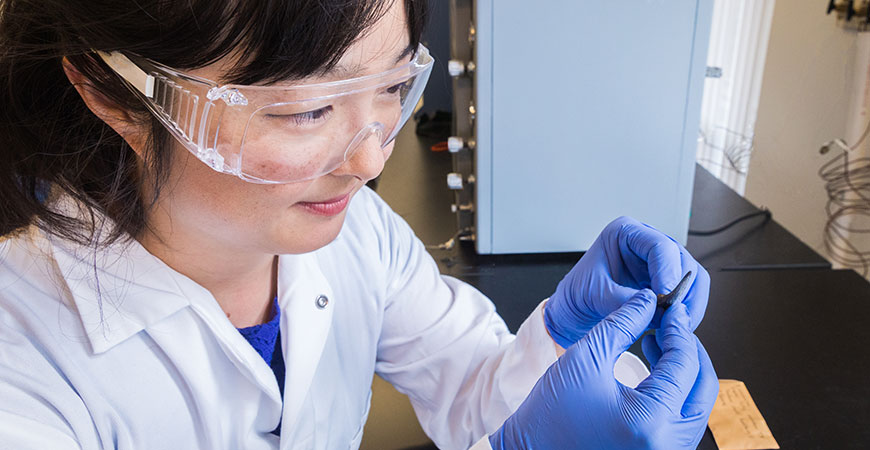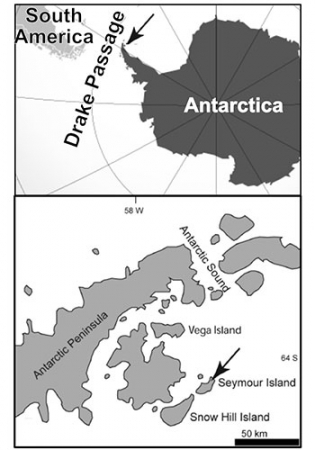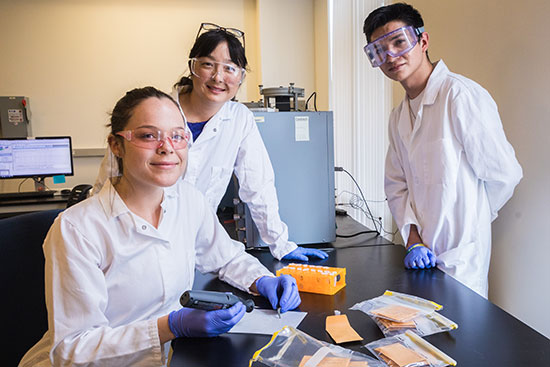
Most people wouldn’t think sharks can teach researchers about the planet’s distant past and its more immediate future.
UC Merced paleoecologist Professor Sora Kim isn’t most people.
There’s a connection between data in fossilized shark teeth and climate change, and thanks to a grant from the National Science Foundation, she aims to use that information to better understand climate change.
The research route she’s navigating might seem as circuitous as the Antarctic Circumpolar Current — which is itself a key part of the links between fossils and the future, but follow along the journey:
- Kim will examine stable isotopes in shark teeth to glean data about environmental and ecological changes to shark communities over time that indicate when — millions of years ago — the Drake Passage between South America and the Antarctic opened as the Earth’s tectonic plates shifted.
- That passage, along with the Tasman Strait near Australia, allow the oceans to circulate around the South Pole, creating the Antarctic Circumpolar Current, which creates prime conditions for thermal isolation and, ultimately, glaciation.
- Before those passages opened, the Earth was in the Eocene epoch, characterized by a greenhouse climate — Earth was warmer from pole to pole with different climate patterns. But the period in Earth’s history when the Drake Passage opened is thought to correspond with the climate changing to ‘icehouse’ conditions, with polar ice caps and greater temperature variations around the globe.
- Understanding those changes will help hone global climate models that are used to predict what Earth faces as the climate changes again.
“Sharks have been around a long time and there are a lot of teeth in the fossil record because sharks are constantly shedding their teeth,” Kim said. “There are limited studies that probe shark paleoecology or link modern ecology and paleoecology together. This will be the first time I get to look at the whole picture — ecology, oceanography and climate change, all seen through the lens of sharks.”

In approving her grant, reviewers at the NSF called this project “transformational science” because it connects these dots.
Kim, with the Department of Life and Environmental Sciences in the School of Natural Sciences , said extracting the environmental data from the stable isotopes in shark teeth fossils — which the teeth take on from the water around them — allows her and her colleagues to look as far back in time as 55-40 million years ago to find out when the Drake Passage opened. Knowledge about the opening is limited; more data has been established about the Tasman Strait, so putting the two together will indicate the era in which the climate shifted.
“The Eocene epoch is seen as an analog for modern-day climate change and what we can expect,” Kim said. “If we can better understand the role of oceanic circulation, CO2 concentrations and tectonic configuration in the climate events of the Eocene, we can better predict what’s coming.”
The climate and what drives changes to it is complex, made up of interconnected factors that have typically been studied in isolation, Kim explained. But when researchers look at the different components — ocean, land and air — and how they interact, they can improve climate models and see what needs adjustments.
“Taking all these components into consideration in global climate models is pretty cutting-edge,” Kim said.
Over the course of the three-year, $850,000 project, Kim and the research team will examine fossil samples from museum and science collections all over the world that share one commonality: They all come from Seymour Island near the South Pole.
Professor Howard Scher from the University of South Carolina will analyze neodymium isotope tracers related to oceanography, and Professor Alexandra Jahn from Colorado University, Boulder, and Professor Matthew Huber from Purdue University will work on the paleoclimate modeling. Professor Jürgen Kriwet with the University of Vienna, Austria, a shark and paleo expert, and Thomas Mörs, senior curator at the National History Museum of Sweden, an expert on Seymour Island, are also collaborators on the project.

Kim is as excited about the educational component of the project as she is about the research itself. The grant supports having undergraduate students participate in the research through the Undergraduate Research Opportunities Center ’s Summer Undergraduate Research Fellowship program.
They will be paid to conduct hands-on, specialized research for the project, and will be supported to go to conferences and meetings where they can meet mentors and advisers which, Kim hopes, will help them transition to graduate school. She’s also planning ways in which the undergrads can be co-authors on papers that result from the project.
“They don’t have to go into academia, but I want to help make graduate school possible for them, especially the first-generation, underrepresented students,” she said. “Science is a great career.”



